Introduction
Aluminum is one of the most versatile and widely used alloys in various industries.
Known for its remarkable combination of strength, corrosion resistance, and weldability, it stands as a top choice for engineers, machinists, fabricators, and welders.
From aerospace components to marine fittings and heavy-duty construction equipment, 6061 aluminum is indispensable across many fields.
While 6061 is similar to its counterpart, 6063, it stands out with significantly higher tensile and yield strength, making it the go-to option for demanding structural requirements.
Though not the strongest aluminum alloy available, 6061 is prized for its balanced properties, combining excellent corrosion resistance with impressive machinability and tensile strength.
Its adaptability, ease of processing, and forgiving nature during fabrication contribute to its widespread use, even in complex manufacturing processes.
This article will dive into the common temper grades of 6061 aluminum, explore their unique material properties,
and provide an overview of how these grades make 6061 aluminum such a versatile and reliable material for numerous applications.
Common Temper Grades of 6061 Aluminum & Material Properties
6061 aluminum alloy is available in various temper grades, each offering specific mechanical properties.
These temper grades are designed to meet different requirements in strength, machinability, formability, and weldability.
Here’s an in-depth look at the material properties of each temper grade:
6061-O (Annealed)
The 6061-O (Annealed) temper represents the softest and most malleable form of 6061 aluminum.
In this state, the aluminum has undergone an annealing process, which is designed to relieve internal stresses and increase formability.
The primary goal of annealing is to make the material more workable and flexible, without requiring high strength.
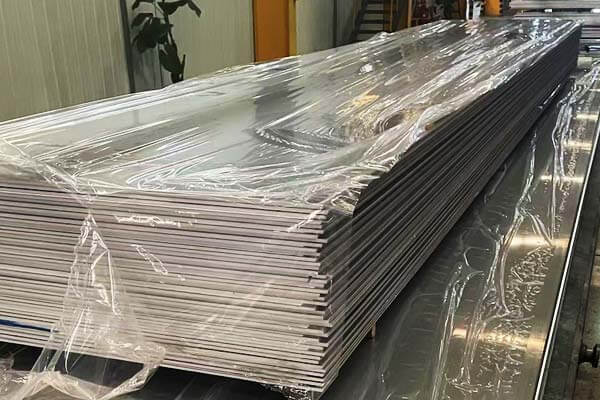
Material Properties of 6061-O
| Property | 6061-O |
|---|---|
| Density (g/cm³) | 2.70 |
| Tensile Strength (MPa) | 120-150 |
| Yield Strength (MPa) | 55-70 |
| Modulus of Elasticity (GPa) | 68.3 |
| Brinell Hardness (500g, 10mm ball) | 35-45 |
| Elongation at Break (%) | 25-35 |
| Shear Modulus (GPa) | 26.0 |
| Shear Strength (MPa) | 70-90 |
| Fatigue Strength (MPa) | 70-90 |
| Thermal Expansion Coefficient (μm/m·°C) | 23.6 |
| Solidus Temperature (°C) | 577 |
| Liquidus Temperature (°C) | 635 |
| Annealing Temperature (°C) | 343-454 |
| Thermal Conductivity (W/m·K) | 151 |
| Specific Heat Capacity (J/kg·K) | 896 |
Key Characteristics
- Softness and Formability: The annealing process makes 6061-O more malleable, allowing it to be easily shaped, bent, and formed into complex shapes without breaking.
This property makes it ideal for deep-drawing and other forming operations where maximum formability is required. - Lower Strength: While 6061-O has good elongation and formability, its tensile strength and yield strength are relatively low compared to other temper grades of 6061.
With a tensile strength ranging from 120-150 MPa and yield strength between 55-70 MPa,
it is not suitable for high-stress or high-load applications where strength is a primary requirement. - High Elongation:6061-O has an elongation at a break of 25-35%, which is relatively high, making it a great choice for applications that need significant deformation without breaking.
- Corrosion Resistance: Like other grades of 6061 aluminum, the 6061-O temper provides excellent corrosion resistance,
making it highly suitable for marine environments, outdoor applications, or any environment where exposure to moisture and corrosion is a concern. - Machinability and Welding:6061-O offers good machinability and can be easily welded, which adds to its versatility in a wide range of manufacturing processes.
It is particularly forgiving during fabrication, which allows for reliable, consistent results even in complex processes like welding and cutting.
Applications of 6061-O
The 6061-O temper is commonly used in applications where maximum formability and deformation are needed, but high strength is not a requirement.
Typical applications include:
- Deep Drawing and Forming Operations: Because of its excellent formability, 6061-O is widely used in the production of parts that require significant shaping and deformation.
- General Fabrication: Components that undergo light to moderate mechanical stress and need to be easily welded, cut, or shaped are ideal candidates for 6061-O.
- Aerospace Components: Certain aerospace applications that demand good formability and lightweight components
without requiring the highest strength levels can benefit from 6061-O. - Automotive and Marine Parts: Parts exposed to less stress, where corrosion resistance is the priority, often utilize 6061-O aluminum, such as trim components or structural parts.
6061-T4 (Solution Heat-Treated and Naturally Aged)
The 6061-T4 temper of aluminum refers to material that has been solution heat-treated and then naturally aged.
This temper offers a moderate strength level while retaining good formability, making it a versatile choice for applications requiring a balance between strength and malleability.
The solution heat treatment process dissolves soluble alloying elements into the base material,
and natural aging helps achieve a balanced set of mechanical properties that are ideal for several structural applications.
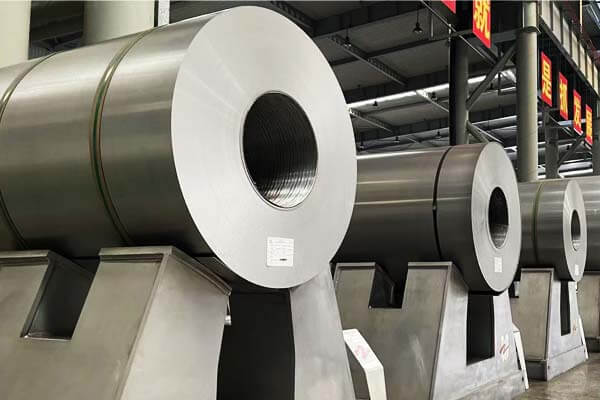
Material Properties of 6061-T4
| Property | 6061-T4 |
|---|---|
| Density (g/cm³) | 2.70 |
| Tensile Strength (MPa) | 240-290 |
| Yield Strength (MPa) | 130-180 |
| Modulus of Elasticity (GPa) | 68.3 |
| Brinell Hardness (500g, 10mm ball) | 70-90 |
| Elongation at Break (%) | 12-15 |
| Shear Modulus (GPa) | 26.0 |
| Shear Strength (MPa) | 140-160 |
| Fatigue Strength (MPa) | 140-160 |
| Thermal Expansion Coefficient (μm/m·°C) | 23.6 |
| Solidus Temperature (°C) | 577 |
| Liquidus Temperature (°C) | 635 |
| Annealing Temperature (°C) | 343-454 |
| Solution Treatment Temperature (°C) | 445-465 |
| Thermal Conductivity (W/m·K) | 151 |
| Specific Heat Capacity (J/kg·K) | 896 |
Key Characteristics
- Moderate Strength: After solution heat treatment and natural aging, 6061-T4 exhibits tensile strength in the range of 240–290 MPa and yield strength between 130–180 MPa,
making it ideal for applications that do not require the highest strength but still need structural integrity. - Good Formability: Despite its moderate strength, 6061-T4 retains excellent formability and workability, especially for applications requiring extrusion or sheet forming.
This allows it to be shaped into complex geometries without compromising on the material’s integrity. - Corrosion Resistance: Like other grades of 6061 aluminum, the 6061-T4 temper offers excellent corrosion resistance,
making it suitable for use in marine, aerospace, and other environments exposed to moisture and corrosive elements. - Balance of Strength and Ductility: The natural aging process results in a balanced set of mechanical properties, combining moderate strength with good ductility.
This makes 6061-T4 ideal for parts that must withstand moderate stress while still allowing for some deformation without failure. - Machinability and Weldability:6061-T4 retains good machinability, allowing it to be shaped, cut, and fabricated with relative ease.
Additionally, its weldability makes it suitable for manufacturing processes where welding or joining is required.
Applications of 6061-T4
6061-T4 is commonly used in applications that require a combination of moderate strength, excellent formability, and corrosion resistance. Some typical applications include:
- Extrusions and Tubing: Due to its good formability, 6061-T4 is often used for extruded profiles and tubing, where a balance of strength and ease of shaping is needed.
- Structural Components:6061-T4 is used in various structural components where the material will undergo moderate stress.
This includes brackets, frames, and other parts found in automotive and aerospace structures. - Aerospace Applications: It is frequently employed in aerospace components that do not require the highest strength
but benefit from moderate tensile strength, good machinability, and corrosion resistance. - Architectural Applications:6061-T4 is widely used in architectural structures, such as window frames, doors,
and other parts that need to balance strength and aesthetic formability. - Marine Components: Its excellent corrosion resistance makes it ideal for marine environments, including boat fittings, dock hardware, and other parts exposed to saltwater.
6061-T5 (Solution Heat-Treated and Cooled to Stabilize Microstructure)
The 6061-T5 temper is another form of heat-treated aluminum designed to achieve a balance between strength, formability, and stability.
The material is solution heat-treated and then cooled to stabilize its microstructure.
This process enhances the material’s mechanical properties, making it ideal for applications that need consistent performance without the extensive aging process required by other tempers like T6.
Unlike other tempers, 6061-T5 does not undergo natural or artificial aging; instead,
it is cooled to room temperature after the solution heat treatment to stabilize its structure, which provides it with good strength and machinability.
This temper is commonly used where high strength is not as critical as ease of fabrication and dimensional stability during machining.
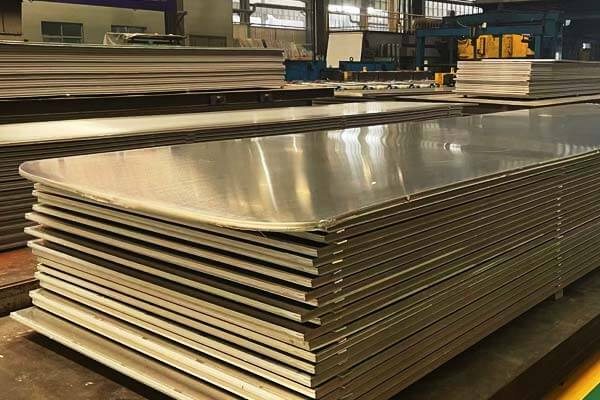
Material Properties of 6061-T5
| Property | 6061-T5 |
|---|---|
| Density (g/cm³) | 2.70 |
| Tensile Strength (MPa) | 240-270 |
| Yield Strength (MPa) | 160-210 |
| Modulus of Elasticity (GPa) | 68.3 |
| Brinell Hardness (500g, 10mm ball) | 70-90 |
| Elongation at Break (%) | 10-12 |
| Shear Modulus (GPa) | 26.0 |
| Shear Strength (MPa) | 140-160 |
| Fatigue Strength (MPa) | 140-160 |
| Thermal Expansion Coefficient (μm/m·°C) | 23.6 |
| Solidus Temperature (°C) | 577 |
| Liquidus Temperature (°C) | 635 |
| Annealing Temperature (°C) | 343-454 |
| Solution Treatment Temperature (°C) | 445-465 |
| Thermal Conductivity (W/m·K) | 151 |
| Specific Heat Capacity (J/kg·K) | 896 |
Key Characteristics
- Moderate Strength:6061-T5 has a tensile strength in the range of 240–270 MPa and yield strength from 160–210 MPa,
making it suitable for applications that require moderate strength without the higher strength provided by more aged tempers like T6. - Stabilized Microstructure: The cooling process after solution heat treatment allows the microstructure to stabilize,
ensuring dimensional consistency and reducing internal stresses that could arise during later processing steps.
This makes 6061-T5 easier to machine and work with compared to other tempers that undergo aging. - Good Formability:6061-T5 retains a reasonable amount of formability, especially for parts that require precise extrusion or machining.
This makes it an excellent choice when you need structural elements that should be easy to form or process. - Machinability: Due to the stabilization of the material’s structure, 6061-T5 offers excellent machinability, allowing it to be shaped, drilled, and processed with precision.
The controlled properties of the temper make it a popular choice for precision machining applications. - Corrosion Resistance: Like other forms of 6061 aluminum, 6061-T5 offers good corrosion resistance,
making it suitable for applications exposed to environmental elements, particularly in industries such as marine and automotive.
Applications of 6061-T5
6061-T5 is most often used for applications where strength is important but not the primary requirement,
and where dimensional stability during machining is key. Some common uses include:
- Extrusions and Structural Components:6061-T5 is ideal for extruded profiles, tubing, and structural components that require precise machining,
such as frames, brackets, and supports. - Precision Machining Parts: The stable microstructure and good machinability make 6061-T5 a popular choice for parts that will undergo extensive machining,
such as precision fittings, mounting brackets, and structural supports. - Architectural Components:6061-T5 is also commonly used in architectural elements like window frames, curtain walls,
and other structural pieces where the material needs to be both formable and dimensionally stable. - Automotive and Aerospace Components: In both the automotive and aerospace industries,
6061-T5 is used in non-load-bearing parts or parts that do not require extreme strength but still need good machinability and corrosion resistance.
6061-T6 (Solution Heat-Treated and Artificially Aged)
The 6061-T6 temper is one of the most widely used and popular grades of 6061 aluminum,
renowned for its high strength, excellent machinability, and superior performance in various applications.
This temper is the result of a two-step heat treatment process: solution heat treatment followed by artificial aging.
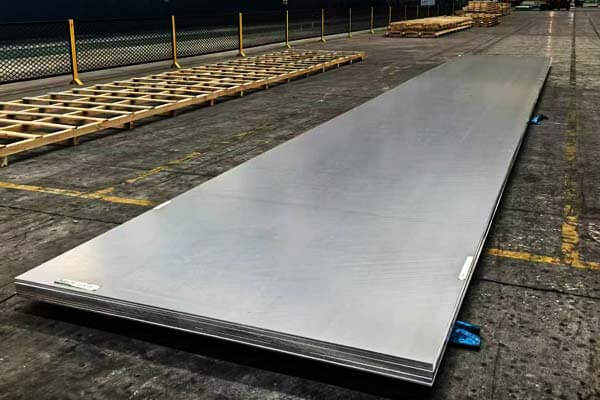
The combination of these processes enhances the mechanical properties of the aluminum, making it suitable for a wide range of demanding applications.
Heat Treatment Process for 6061-T6
- Solution Heat Treatment: The aluminum alloy is heated to a specific temperature (around 445–465°C) to allow the alloying elements to dissolve into the solid solution.
This process increases the material’s strength and uniformity. - Artificial Aging: After solution heat treatment, the material is rapidly cooled and then aged at a higher temperature (typically between 160–190°C) for several hours.
This aging process helps the material achieve maximum strength and hardness by promoting the formation of fine precipitates within the aluminum’s microstructure.
This combination of heat treatments gives 6061-T6 its high strength-to-weight ratio, excellent corrosion resistance,
and impressive machinability, making it ideal for a variety of structural and engineering applications.
Material Properties of 6061-T6
| Property | 6061-T6 |
|---|---|
| Density (g/cm³) | 2.70 |
| Tensile Strength (MPa) | 276-310 |
| Yield Strength (MPa) | 230-270 |
| Modulus of Elasticity (GPa) | 68.3 |
| Brinell Hardness (500g, 10mm ball) | 95-125 |
| Elongation at Break (%) | 8-10 |
| Shear Modulus (GPa) | 26.0 |
| Shear Strength (MPa) | 160-200 |
| Fatigue Strength (MPa) | 160-200 |
| Thermal Expansion Coefficient (μm/m·°C) | 23.6 |
| Solidus Temperature (°C) | 577 |
| Liquidus Temperature (°C) | 635 |
| Annealing Temperature (°C) | 343-454 |
| Solution Treatment Temperature (°C) | 445-465 |
| Thermal Conductivity (W/m·K) | 151 |
| Specific Heat Capacity (J/kg·K) | 896 |
Key Characteristics of 6061-T6
- High Strength: One of the most prominent features of 6061-T6 is its high tensile strength, which ranges from 276 to 310 MPa, and yield strength from 230 to 270 MPa.
This makes it suitable for applications requiring substantial load-bearing capacity. - Excellent Machinability: Even though 6061-T6 is a high-strength alloy, it is still highly machinable.
It can be easily cut, drilled, and shaped with precision, which is why it is widely used in precision manufacturing and machining operations. - Good Formability: While it is a strong material, 6061-T6 also offers good formability.
This makes it easier to process into complex shapes, which is essential in aerospace, automotive, and construction industries. - Corrosion Resistance: The artificial aging process enhances the corrosion resistance of 6061-T6, especially in environments prone to atmospheric exposure.
This makes it particularly useful for marine and outdoor applications. - Durability: Thanks to its high strength and good fatigue resistance, 6061-T6 exhibits long-term durability,
even under demanding conditions such as frequent loading, vibration, and harsh environmental conditions.
Applications of 6061-T6
The 6061-T6 alloy is versatile and is used in a broad range of applications where high strength,
good corrosion resistance, and excellent machinability are crucial. Some of the primary uses include:
- Aerospace and Aircraft Parts:6061-T6 is a go-to material in the aerospace industry. It is used to make aircraft structural components,
such as wing spars, fuselage frames, landing gear parts, and aircraft skins, where both strength and weight reduction are essential. - Automotive Components: In the automotive sector, 6061-T6 is often used for high-performance parts,
including chassis, brackets, suspension components, and engine components, where high strength-to-weight ratios are critical. - Marine Applications: With excellent corrosion resistance, 6061-T6 is widely used in the marine industry for boat hulls, marine hardware, and fittings that are exposed to salty water.
- Structural Components:6061-T6 is commonly used for structural applications like bridge components, architectural frames, and heavy-duty construction machinery parts.
It provides a strong, yet lightweight, solution for large structures. - Sports Equipment:6061-T6 is a popular choice for making bicycle frames, ski poles, kayaks,
and other sports equipment due to its excellent strength and ability to withstand impact and fatigue. - Precision Machining Parts: Due to its excellent machinability, 6061-T6 is often chosen for high-precision parts
such as machine housings, automated equipment, and robotic arms, which require high strength and precision.
6061-T651 (Solution Heat-Treated, Stress-Relieved, and Artificially Aged)
The 6061-T651 temper is an enhanced version of the 6061-T6, offering all of the high-performance characteristics of the T6 temper with the added benefit of a stress-relieving process.
This makes 6061-T651 particularly valuable in applications where precision machining is required,
and internal stresses need to be minimized to ensure better dimensional stability and machinability.
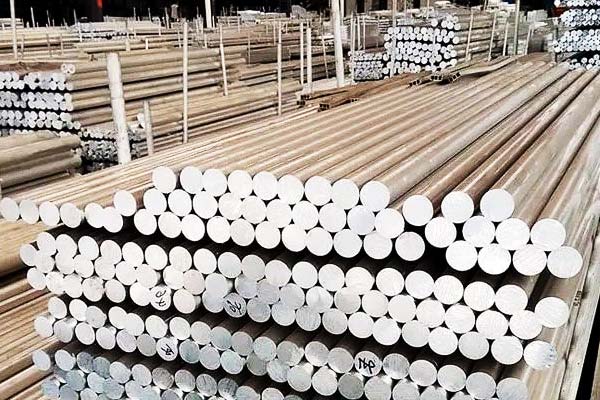
This specific temper involves a three-step process:
- Solution Heat Treatment: The alloy is heated to the necessary temperature (typically 445-465°C) to
dissolve alloying elements into the base material, allowing for a uniform solid solution. - Stress Relieving: After the solution heat treatment, the material undergoes a stress-relieving process.
This involves heating the aluminum to a lower temperature than the solution treatment to relieve internal stresses that have developed during the alloy’s processing.
This step helps prevent distortion during machining and enhances the material’s dimensional stability. - Artificial Aging: Finally, the material is subjected to an artificial aging process (typically at 160-190°C) to increase strength and hardness,
resulting in mechanical properties similar to those of 6061-T6 but with improved machinability.
The stress-relieving step makes 6061-T651 the preferred choice for parts requiring tight tolerances,
complex geometries, and precise machining without the risk of distortion or warping.
Material Properties of 6061-T651
| Property | 6061-T651 |
|---|---|
| Density (g/cm³) | 2.70 |
| Tensile Strength (MPa) | 276-310 |
| Yield Strength (MPa) | 230-270 |
| Modulus of Elasticity (GPa) | 68.3 |
| Brinell Hardness (500g, 10mm ball) | 95-125 |
| Elongation at Break (%) | 8-10 |
| Shear Modulus (GPa) | 26.0 |
| Shear Strength (MPa) | 160-200 |
| Fatigue Strength (MPa) | 160-200 |
| Thermal Expansion Coefficient (μm/m·°C) | 23.6 |
| Solidus Temperature (°C) | 577 |
| Liquidus Temperature (°C) | 635 |
| Annealing Temperature (°C) | 343-454 |
| Solution Treatment Temperature (°C) | 445-465 |
| Thermal Conductivity (W/m·K) | 151 |
| Specific Heat Capacity (J/kg·K) | 896 |
Key Characteristics of 6061-T651
- High Strength: Like 6061-T6, 6061-T651 has excellent tensile and yield strength values,
making it ideal for structural and load-bearing applications. Its tensile strength ranges from 276 to 310 MPa, and its yield strength is between 230 and 270 MPa.
This makes it suitable for parts that need to endure heavy loads. - Improved Machinability: The stress-relieving process reduces internal stresses and minimizes the potential for distortion during subsequent machining.
As a result, 6061-T651 is highly recommended for precision parts that require tighter tolerances, particularly in industries where high-precision components are crucial. - Corrosion Resistance: As with other 6061 tempers, 6061-T651 offers excellent corrosion resistance, especially in outdoor or marine environments.
It performs well in the presence of both atmospheric and marine conditions, making it suitable for applications exposed to harsh environments. - Dimensional Stability: The stress-relieving process helps to ensure better dimensional stability during machining.
This is critical for parts that need to maintain specific shapes, sizes, and tolerances throughout their lifecycle. - Ductility & Toughness: While maintaining good strength, 6061-T651 also has a sufficient level of ductility and toughness, allowing it to absorb impact without breaking.
This balance of properties ensures the material’s durability in dynamic and demanding applications.
Applications of 6061-T651
The unique characteristics of 6061-T651, particularly its improved machinability and dimensional stability,
make it ideal for a variety of industries and applications that require precision and high-performance materials. Some of the common uses include:
- Aerospace Industry: Like 6061-T6, 6061-T651 is widely used for aircraft components, including fuselage frames, wing spars, engine parts, and landing gear components.
The added benefit of stress relief makes it ideal for highly precise aerospace applications. - Precision Machining:6061-T651 is often used in precision-machined parts that demand high tolerances.
It is commonly found in high-performance applications such as robotic components, automated equipment, and electronics housings. - Marine Industry: As with other 6061 alloys, 6061-T651 offers excellent resistance to saltwater corrosion,
making it perfect for marine fittings, boat hulls, and other marine applications that are exposed to harsh environmental conditions. - Construction and Structural Components: Due to its strength and stability, 6061-T651 is often employed in structural applications,
such as bridge components, building frameworks, and heavy-duty machinery. - Transportation: The automotive and railroad industries make extensive use of 6061-T651 for chassis components,
suspension parts, and engine components, where strength and reliability are paramount. - High-Tolerance Parts: Whether for robotics, automated systems, or machine tools, 6061-T651 is a preferred material for parts that require high precision and dimensional accuracy.
The additional stress relief step ensures minimal distortion during machining, making it an excellent choice for tight tolerance components.
Conclusion
6061 aluminum stands out for its versatility and exceptional properties, including strength, corrosion resistance, and weldability.
Temper grades of 6061 aluminum—6061-T6, 6061-T4, 6061-T5, and 6061-T651—allow it to be tailored for specific applications.
While 6061-T6 remains the most popular choice due to its excellent balance of strength and formability,
other tempers like 6061-T4 and 6061-T5 are used when different levels of strength and machinability are required.
Understanding these temper grades and their properties ensures the selection of the best option for your project’s unique needs.
For more detailed inquiries or specific material requirements, feel free to contact us.


